NANGA DOWN GUIDE 01
DOWN CIRCULATION
The Nanga Down Cycle
NANGA promotes a circulating life cycle of down
Learn more about its four-part cycle
The down used by NANGA begins as high-quality, raw down imported from overseas. It is then cleaned and processed by a Japanese down and feather manufacturer before being made into NANGA's finished products. These products can be used anywhere––from the city to the great outdoors––and their lifespans can be prolonged with proper care. When a down product finally becomes worn out, a recycling project allows that down to be brought back to life as a new product. NANGA promotes a circulating life cycle of down, and here are the four stages of that cycle.
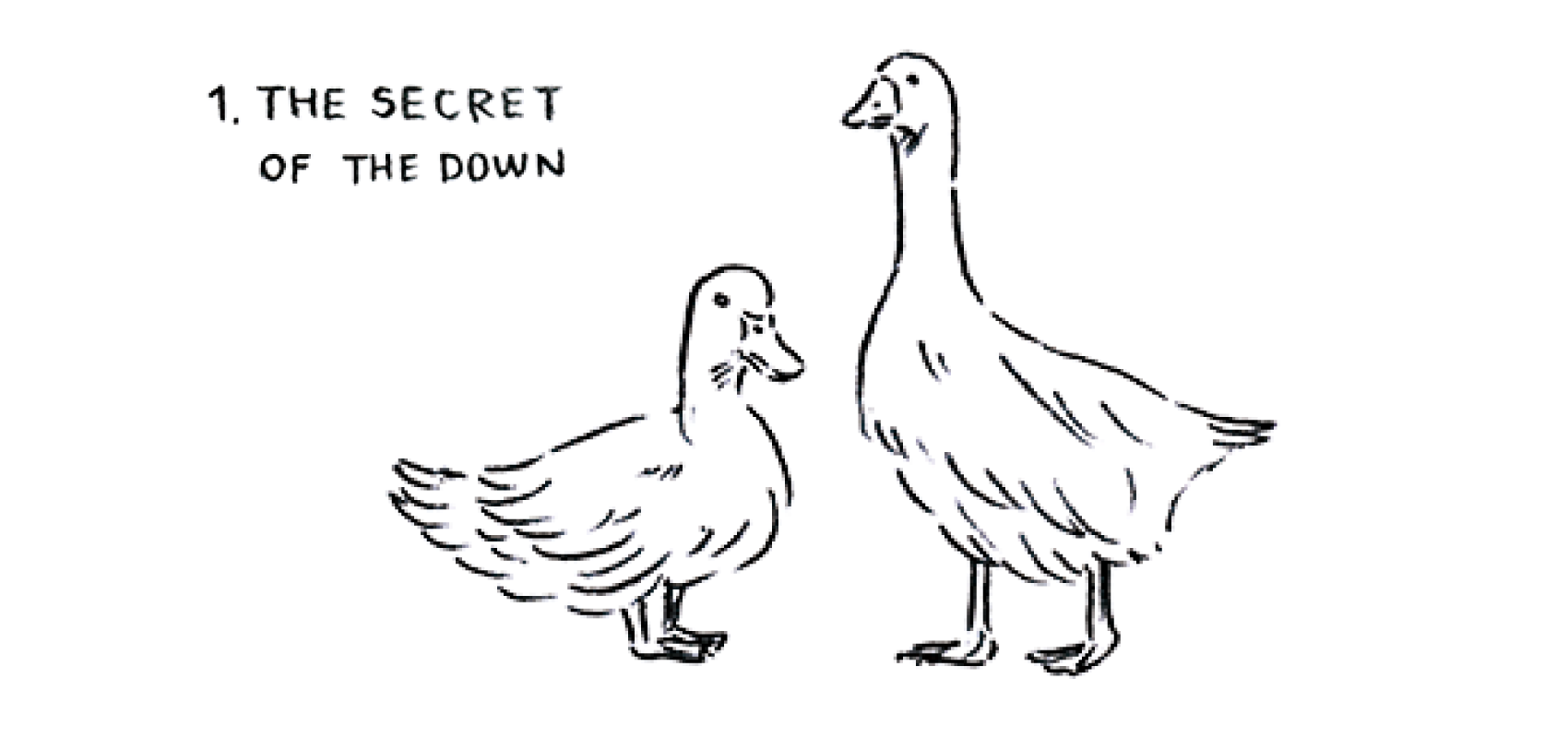
Which part of the bird's feathers is referred to as down? The ins and outs of down.
The term "down" refers to the feathers that grow on the breasts of waterfowl. Down is light and offers great insulation, along with the ability to pass moisture into the atmosphere. Balls of down are known as "down clusters." Down is a precious material as it can only be collected in small quantities from a single bird and is not found on land fowl. Only waterfowl grow down as they need to protect themselves against the loss of body heat in their waterside habitats. The downs that are used as materials for manufactured products come primarily from two kinds of waterfowl: geese and ducks. Goose down is large. Its fine, soft fibers provide excellent insulation and water absorbency. In contrast, duck down is firm and springy, which gives it great resiliency. Duck downs are ideal for giving the products a firm loftiness.
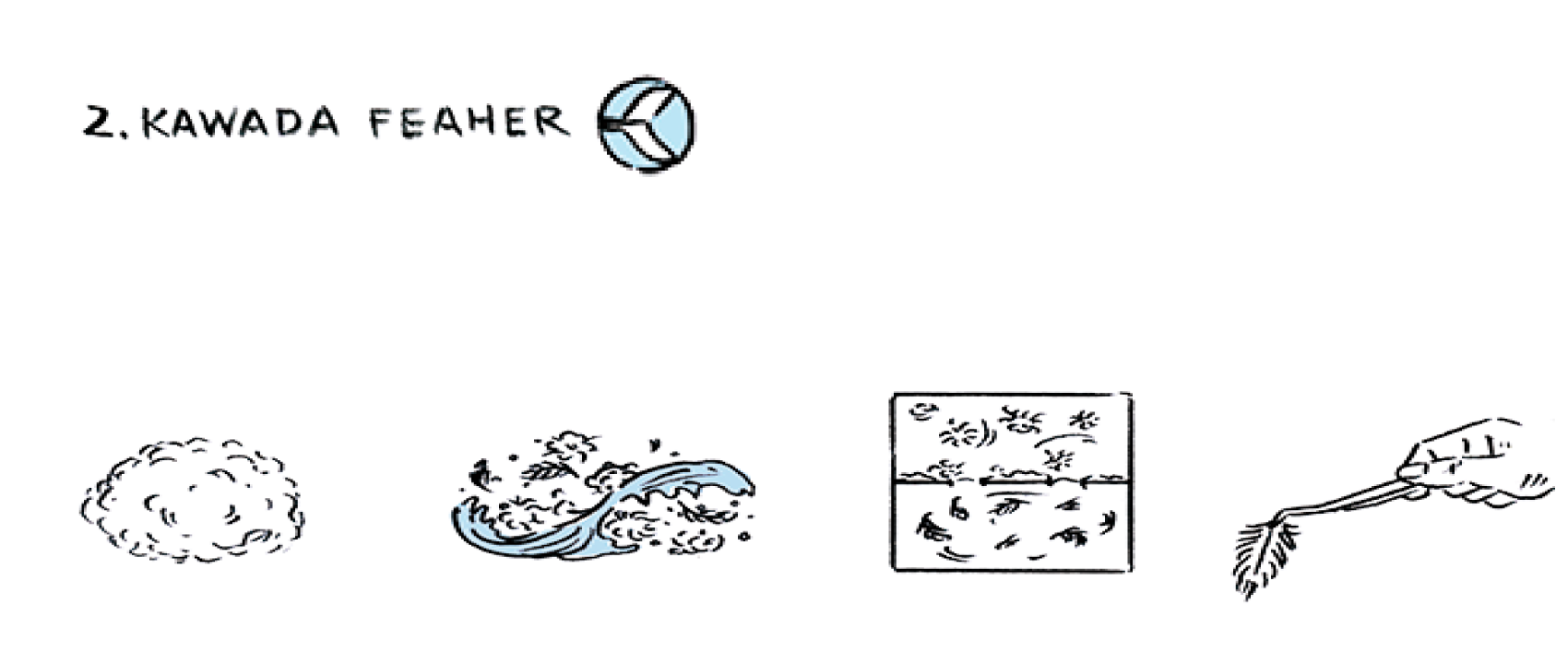
Kawada Feather, Japan's leading specialist in down refinery.
The down that NANGA uses in its products goes through a cleaning process at Kawada Feather, a Japanese down and feather manufacturer. Raw waterfowl down is covered with dust and grime that is invisible to the naked eye; when left untreated, it can degrade the down's insulation performance as well as promote the growth of bacteria and dust mites. Situated on the Ise Plains in Mie Prefecture, Kawada Feather's main factory is fully equipped with the company's very own purification and processing equipment. The water provided by the bountiful, mountainous environment is a key factor in the cleaning and purification process. The dry climate promotes the down to expand, which further enhances the factory's ability to remove dirt. The pristine and super soft quality of the water is perfect for washing away dander. Kawada Feather reaps the full benefits of its environment, advanced technology, and human craftsmanship to produce beautiful down.

Down can be washed at home! Learn the proper way to wash down.
Washing down products will degrade their quality––this is a very common misconception. The truth is that proper washing will cleanse the down of absorbed perspiration and oils, bringing back its fluffiness. There is no need for frequent washing. However, we would like to share with you the correct method for washing down, so that you can comfortably enjoy the full benefits of down products.
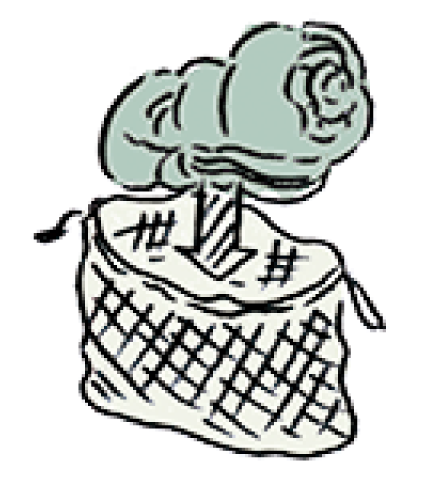
01
Place the down in a mesh laundry bag.
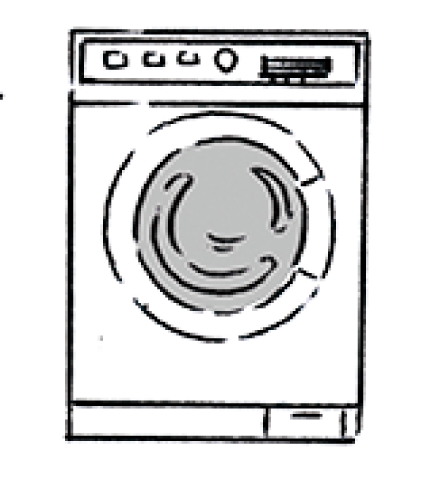
02
Choose the same setting on your washing machine that you would use for a blanket.
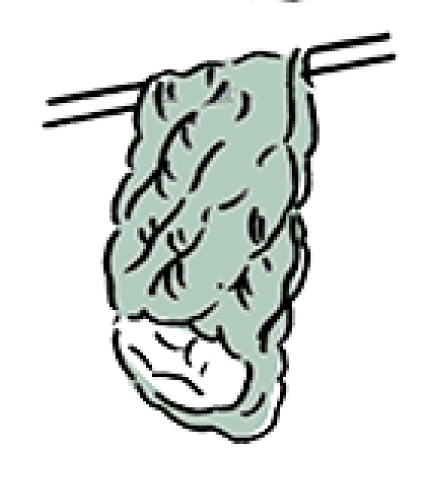
03
Do not use the spin cycle. Instead, wring the down out by hand and dry it in a shaded area out of direct sunlight. Then, pat it down with both hands, and even out any wrinkles.
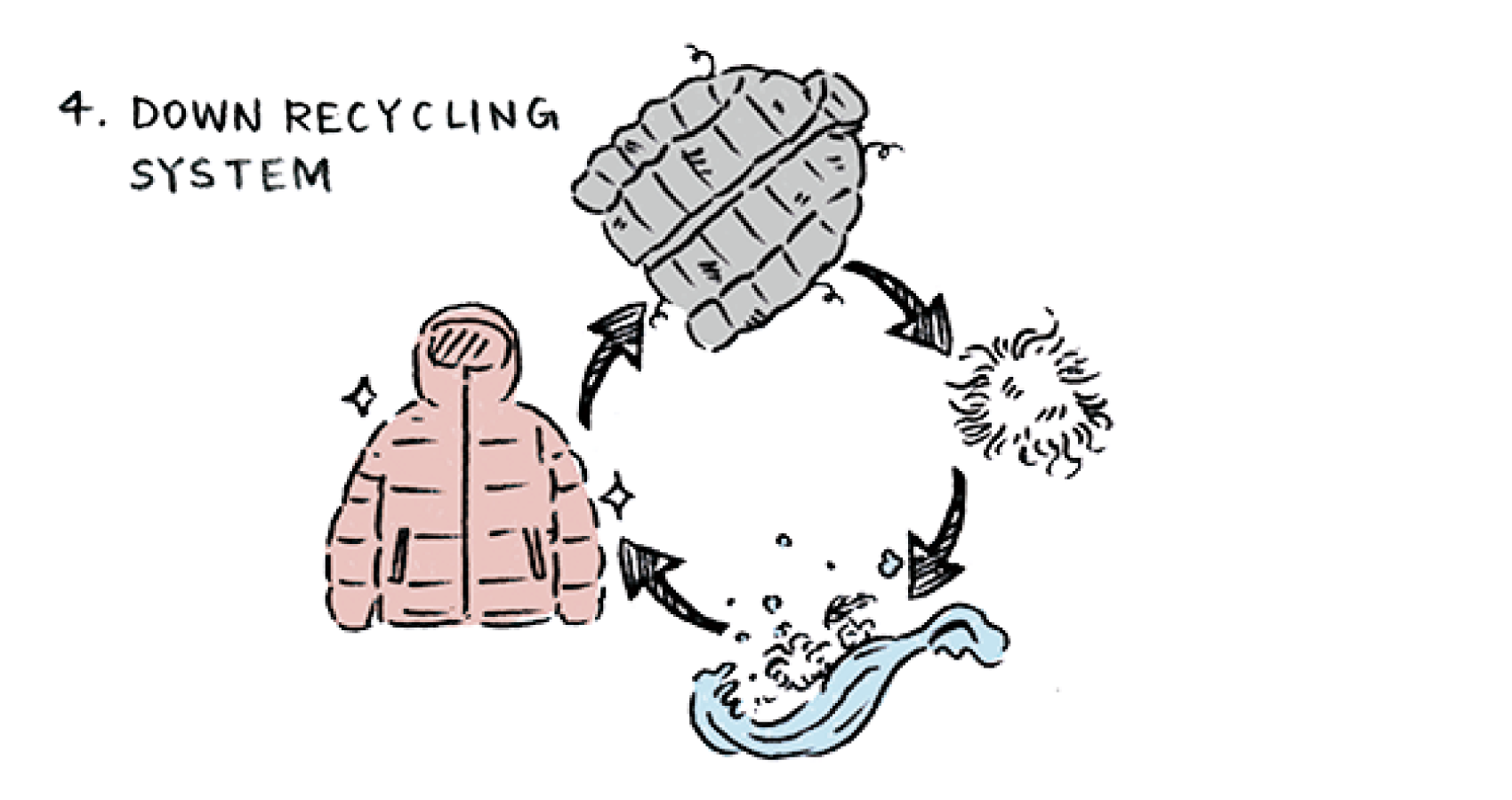
Green Down: The down recycling project
The Green Down Project advocates the reuse of down, which is a finite resource. The aim is to collect down products that are no longer being used, regardless of the manufacturer, and refines the downs to repurpose them as new products. The project offers several benefits.
The key benefits of recycling down
Environmental impact
Reduces waste, reuses resources, limits carbon dioxide emissions, provides environmental education
Promotes the employment of persons with disabilities
Commissioning of down product sorting and disassembly processes
Contributes to local economies
Partnership with the Red Feather (Central Community Chest of Japan)
Provides stable supply of down
Increased supply and stabilized prices through recycling